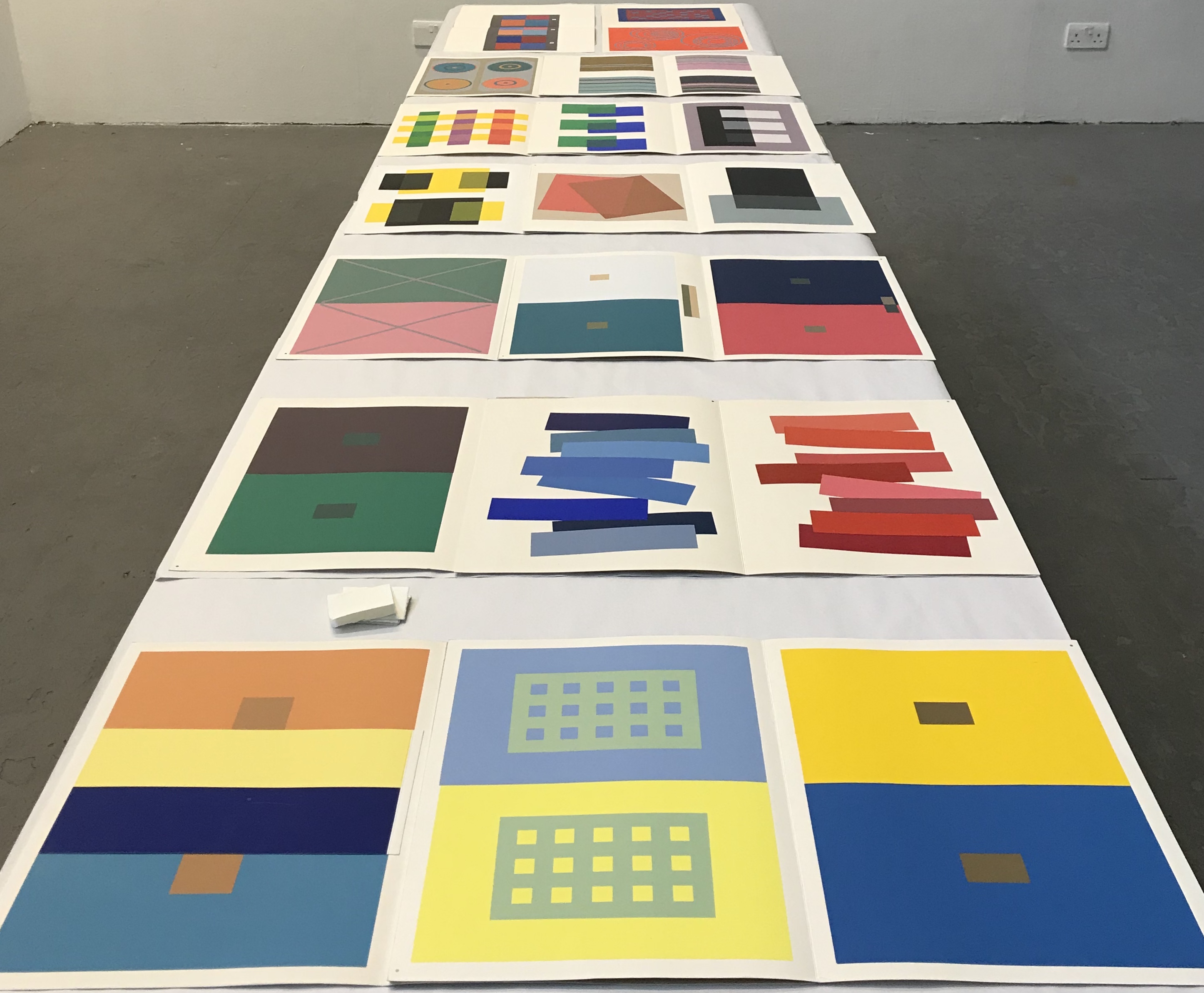The Bauhaus’ Matière

(Picture above: Albers Interaction of Colour workshop)
We have witnessed a rally of centenaries: Malevich’s Black Square (1913), the founding of De Stijl (1917), and this year in 2019, it will be the centenary of the founding of The Bauhaus by Walter Gropius in Weimar, Germany (1919).
Like De Stijl – defined as a journal, a group of artists and an idea – the Bauhaus has a multi-fold identity. Bauhaus (translated as ‘construction house’) began as an art school, whose teachings now live not only in the Fine Arts today, but in ideas of design, architecture and what we call ‘modern living’.
It’s almost impossible to define how canonical Bauhaus is, but the likelihood is that everything from a smart phone to a lowly self-assembly bookshelf, owes a debt to this influential movement and group of artists.
The Bauhaus relocated to Dessau in 1925 – where many of the iconic images of this movement originate – and finally had a brief spell in Berlin in 1933 before the war broke. Artists such as Josef and Anni Albers fled Europe and found refuge in America where their Bauhaus teachings found a place for dissemination first at Black Mountain College – where Josef Albers taught for 16 years – and then at Yale University – where he was chairman of the department of design, going on to influence many of the major artists we now associate with late 20th century ‘modern art’.
When German speaking Josef Albers arrived at Black Mountain College he was given an English translator to deliver his classes. After a short period of what I can only imagine was a frustrating routine of speaking and then waiting for commands to be translated, Albers dispensed with the translator reverting instead to pointing, gesticulating and nodding.
At Black Mountain College Albers developed ideas of our relationship to materials and colour that were first taught by Johannes Itten at the Bauhaus in what is called the ‘Preliminary’ stage of the course, and later after Itten’s departure, by László Moholy-Nagy and Josef Albers, and by Paul Klee and Wassily Kandinsky in the ‘colour theory’ stage of the course. Everything from choosing a new shade of beige for the lounge, to the colour prediction industry used by designers, owes something to these ideas about colour which began at the Bauhaus.
Elements from Bauhaus colour workshops would eventually become Albers’ seminal ‘Interaction of Colour’ handbook, first published by Yale University Press in 1963 as a limited silkscreen edition of 150 colour plates – silkscreen printed with pigment colour so that the true colour behind these studies was related accurately.
A lesser known course taught at the ‘Preliminary’ stage was the Matières, which focused – as the title suggests – on our relationship to materials. Before students went on to specialise in glass, printmaking, painting or architecture, they were first asked to consider rudimentary materials such as bits of string, metal wire, wood and paper, sand, tin foil and mesh; and to, what ostensibly could be called, ‘play’ with these materials and become sentient to the way they fold, ripple, feel, bend and move. The purpose was to be sensitive to the way a material or substance has a natural predisposition to behave in a certain way, such as the way sand moves around our fingers or the way a wire mesh’s can be manipulated into form by our touch.
The ‘Matières’ is often overlooked as its teachings of materials or haptic experience is much subtler to convey, however, where its similarities lie in regard to the colour workshops is the way they both are philosophical tools as well as technical teachings. Ultimately the teachings of the Bauhaus are not about materials or colour, but about how we consider the world around us through an experience of materials and colour – the ‘Matières’ teachings us to be sensitive to the world around us and the colour workshops teaching us that in life, as in colour, everything is relative.
Juan Bolivar

